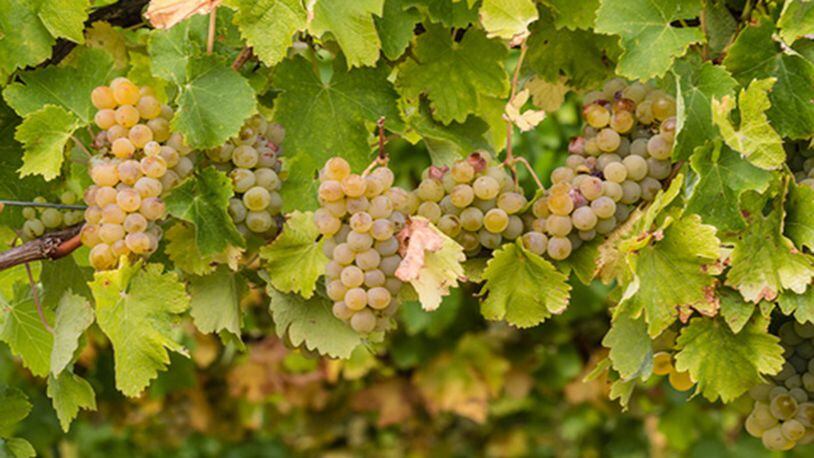As you know, drinking wine is the best way to learn about it. You could also say that learning about wine is the best way to drink it. The affordability of Chilean sauvignon blanc allows you to make learning about it a minor quest (surely you have more major quests occurring in your life at any given moment) to find out exactly which style you like best.
Maybe you don’t want to pick a certain style as your favorite. Maybe you want to leave yourself open to sometimes turning to the light, refreshing style that is appropriate for situations that call for an aperitif — no food needed, just a zippy wine to awaken your palate before dinner — or when you need a wine to accompany raw oysters, ceviche, salads or light seafood appetizers. This style is fresh and citrusy, with some combination of tangy lime, pear, green apple, grapefruit, rocky or chalky minerality, and zesty acidity.
On another occasion, if you did not want to choose a side and stick to it, you might want your Chilean sauvignon blanc to be softer and rounder, with more ripeness of fruit. These riper notes could arrive as expressions of stone or tropical fruits, from peach and pineapple to mango and melon. With its riper, more formidable fruit and fuller body, this style would likely have little trouble standing up to grilled shrimp, roasted chicken, creamy pastas or pork dishes.
In between those two styles, and perhaps sometimes bridging them in Venn-diagram ways, are what could be considered Chilean sauvignon blanc’s most intriguing aromas and flavors: green-pepper spice and asparagus. The latter might sound like a bad thing, but it’s not. I mean, I guess it is if you don’t like asparagus. But even then, it’s not as if these aromas and flavors completely overwhelm the wine — they’re just part of its overall expression.
You might even get grassy notes in your Chilean sauvignon blanc. And while most people over the age of 4 don’t like the taste of grass, again, it’s not liquid grass. Some other aromas (in completely different wine styles) are described by things you would never want to put in your mouth, at any age. Horse blanket? And that, to some wine people, is a great smell. Maybe asparagus and grass are sounding pretty tame by comparison all of a sudden. Maybe even intriguing. If so, go out and collect some Chilean sauvignon blanc and taste through it. You won’t have to spend a lot, and the wines will offer you all kinds of rewards for your investment of time and money.
Sauvignon blanc does well in Chile’s cooler-climate growing areas closer to the country’s western coast. Some notable regions to look for on bottles are Casablanca Valley and San Antonio Valley, which includes the also-noteworthy Leyda Valley. But don’t restrict yourself to these areas alone, and don’t be intimidated by the notion of taking on a whole country, rather than a single region. These sauvignon blancs from Chile are friendly, accessible and — the magic word when it comes to experimentation and discovery — inexpensive. Chardonnay was the wine style that first turned the world’s attention toward Chile as a white-wine producer, but Chilean sauvignon blanc has built a reputation all its own since then. Make sure to give yours a nice chill before you unscrew those caps and pour.
RECOMMENDED
Below are notes from a recent tasting of Chilean sauvignon blanc. They are listed in ascending order, according to price.
2015 Hacienda Araucano Reserva Sauvignon Blanc. This wine from Lolol Valley was full of tropical fruit, melon and a tiny whiff of honey joined by lemony citrus, wet-stone minerality, vibrant acidity and 13 percent alcohol. $11
2015 Santa Carolina Reserva Estate Sauvignon Blanc. Some of those greener expressions came out in this Leyda Valley wine, including a hint of freshly cut grass and asparagus followed by floral notes, stone fruits and a clean, refreshing finish. $11
2016 Root: 1 Sauvignon Blanc. From Casablanca Valley, this one offered fresh lime and some tartness that was tempered by minerality, herbs, crushed rock and lively acidity, all leading to a clean finish, plus a moderate 12 percent alcohol. $11
2016 Matetic Vineyards Corralillo Sauvignon Blanc. Gooseberry, grapefruit, citrus and just a little suggestion of asparagus gave way in this San Antonio Valley wine to bright mango and other tropical fruit flavors, with tongue-zapping spice and acidity. $15
2014 William Cole Vineyards Albamar Estate Bottled Sauvignon Blanc. From Casablanca Valley, this one was full of lime and other citrus tang, plus peach and crushed-rock minerality, all of it fresh and exuberant, leading to a lip-smacking conclusion. $16
2015 Concha y Toro Serie Riberas Gran Reserva Sauvignon Blanc. This Colchagua Valley bottling started with fresh, tart lime, chalky minerality and spicy green pepper before moving into even more tangy citrus notes that led to a clean finish. $17
About the Author
